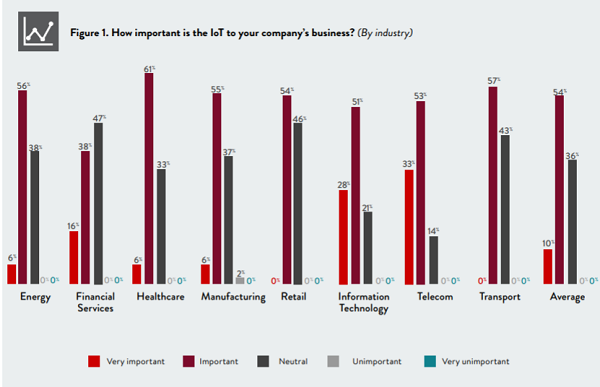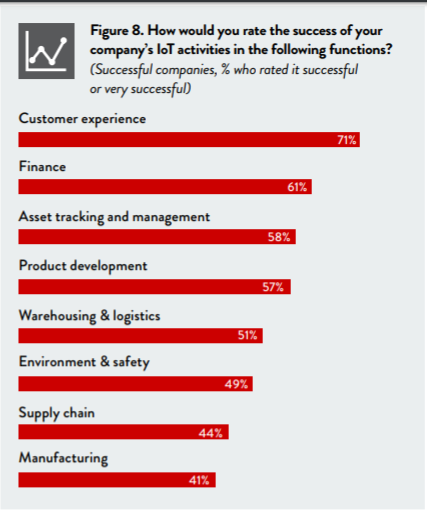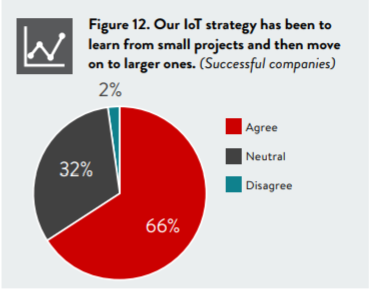While the Internet of Things (IoT) has garnered a lot of press, many organizations are starting to pursue IoT for the first time. From those that are further along, we know that success has been mixed -- and have learned that IoT isn’t just about adding IP endpoints to an existing network, nor is it just about implementing new applications. IoT needs to be enterprise-wide, not departmental, effort.
I believe that IoT is overhyped as a new technology wave. If you’re tasked with implementing IoT in your organization, you may find separating the hype from reality an impossible task. Further, you may have a difficult time determining practical implementation phases for an IoT project.
Why Do IoT?
IoT is anticipated to most impact the industrial economy, with $11 trillion in annual savings and revenues forecasted for 2025 and a 21% boost in corporate profits by 21% by 2022, according to data cited in the Forbes report. Some of the hype focuses on IoT as the foundational technology leading to advances in artificial intelligence and robotics.
For the report, Forbes asked 500 executives how important IoT is to their current businesses. About two-thirds (64%) said it was important or very important. The actual level varied by industry, with the highest levels of importance noted by those in IT and telecom, as you can see in the image below. Regarding industries that don’t place importance on IoT, this may indicate that some organizations don’t understand how IoT can improve their businesses or that they’re still creating their strategies.
Where Is the Success?
In looking at data from respondents who indicated their IoT initiatives have met or exceeded initial expectations, Forbes found these organizations had the most success with projects in the customer experience (71%) function. This is good news, since customer experience can make or break a company and keeping customers is paramount. The cost to regain a customer is usually higher than the cost associated with keeping a customer.
Success in finance followed, at 61%. I would have expected that number three, asset tracking and management, to be above the 58% reported, as shown below. I think this area would be of more value to IT and telecom companies that have wide-ranging and remote assets that usually aren’t reported accurately.
Start Small
As seen by successful organizations, IoT programs are better led by the enterprise, not just one department. Of those organizations that have seen success, 67% reported their IoT initiatives are meeting or exceeding expectations. The respondents indicated they believe there is a strong learning curve when implementing IoT projects. One respondent stated that the organization should experiment, not create a total solution.
One aspect of this is how you measure success. You might find you’re your selected metrics don’t demonstrate a significant financial value. You might find that customer satisfaction may be a better measure.
You should start with one function. You may need to implement different models/solutions. Once implemented, your organization can select what you’ve learned and move on to more ambitious projects. Successful organizations reported success 66% of the time when they pursued smaller initiatives such as pilot projects, feasibility demonstrations, and operational testing. This allowed them to develop their expertise and create a technology and staff base for larger initiatives (see figure below).
Challenges
The primary challenges organizations face have less to do with the technology and more to do with how companies build, staff, educate, and support IoT efforts. Success is attributable to obtaining cross-department cooperation -- getting sales and marketing to share customer data with manufacturing and fulfillment, for example.
This is followed by the availability of the right talent and the integration of distributed and disparate data. IoT is rapidly evolving in virtually all industries and geographic regions. This produces results of a real shortage of staff, making their value increase, and their compensation. The limited availability of IoT expertise will drive the inclusion of external partners as part of IoT development teams.
Forbes flagged 11 major IoT implementation challenges. For successful companies, the top five challenges are:
- Cross-department cooperation
- Quality of IoT technologies available
- Integration of disparate data
- Availability of skilled staff
- Inability to demonstrate return on investment (ROI)
This list shifts for companies that reported having less success with their IoT implementations. The top five challenges for those organizations are:
- Look of cooperation from workforce
- Lack of IoT vision or strategy
- Concerns about IoT security
- Inability to demonstrate ROI
- Lack of executive support
Implementing the best IoT platform isn’t necessarily the right answer. Getting your organization to buy-in, participate in the projects, share information, and invest in early trials are probably the best recommendations you can make to your C-level management. IoT projects should be a group effort, not a single department effort.













